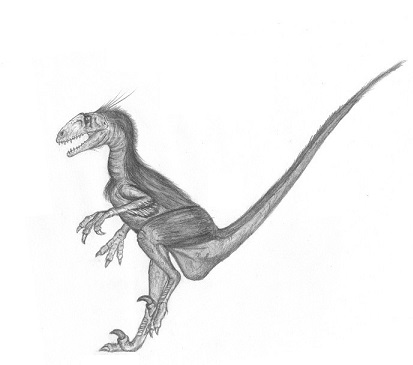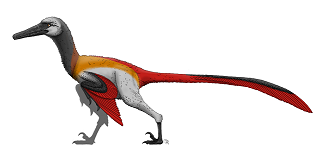
Unenlagia is a is a genus of dromaeosaurid theropod Dinosaur dinosaur that lived during the Late Cretaceous period, approximately 90 million years ago. Dromaeosaurids are a family of small to medium-sized theropod dinosaurs commonly known as "raptors." The name "raptor" comes from the Latin word "raptor," meaning "robber" or "seizer," highlighting their predatory nature.
Unenlagia was first discovered in the Neuquén Province of Argentina, and its name Neuquenraptor refers to the region where it was found. However, it is more widely known and recognized as Unenlagia.Unenlagia was a fascinating dinosaur with unique characteristics. It was a bipedal dinosaur, meaning it walked on its hind legs. Its body was relatively lightweight and agile, with hollow bones that would have contributed to its swift locomotion.
| Name: | Neuquenraptor dinosaurs |
| Size: | Approx: 2 to 3 meters |
| Main Facts: | Neuquenraptor potentially a specimen of Unenlagia, was a swift, predatory dinosaur from the Late Cretaceous period. Known for its agile nature, it was a dromaeosaurid with avian-like characteristics. |
Unenlagia was likely an active predator, preying on small animals such as small mammals, reptiles, and possibly even small dinosaurs or hatchlings. Its intelligence and hunting abilities would have made it a formidable predator within its ecosystem.

As a potential species or specimen of Unenlagia,Neuquenraptor would share several physical characteristics with other members of the dromaeosaurid family. It would have been a small to medium-sized theropod dinosaur, characterized by its bipedal stance and swift, agile locomotion.
Like other dromaeosaurids, Neuquenraptor would have had a slender, lightweight body with hollow bones to reduce weight. Its long arms would have been equipped with sharp claws, including the infamous "killing claw" on the second toe, which it used to capture and subdue its prey.
As an agile predator, it likely had a keen sense of sight and coordination, making it a formidable hunter in its Late Cretaceous environment.
Neuquenraptor also known as Unenlagia, is a genus of dromaeosaurid theropod dinosaur from the Late Cretaceous of Argentina. It is characterized by its lightweight and agile body, bipedal locomotion, and long arms with sharp claws, including the infamous "killing claw" on its second toe. As a dromaeosaurid, it was likely a swift and intelligent predator, preying on small animals using its specialized hunting adaptations.
Unenlagia's discovery has provided valuable insights into the evolutionary relationship between birds and dinosaurs, as it exhibits avian-like characteristics, contributing to our understanding of the remarkable diversity of life during the Mesozoic era.
Unenlagia, as a dromaeosaurid, shares common characteristics with other members of this family. Dromaeosaurids were small to medium-sized theropod dinosaurs known for their sharp, curved claws and lightweight, agile bodies.
Like other theropods, Unenlagia and other dromaeosaurids were bipedal, walking on their hind legs, which enabled them to be swift runners.
Dromaeosaurids, including Unenlagia, had an enlarged "killing claw" on the second toe of their feet. This specialized claw was likely used to deliver fatal blows to their prey.
Unenlagia was a carnivorous dinosaur, and like other dromaeosaurids, it was a predator, hunting and feeding on small animals such as mammals, reptiles, and possibly even small dinosaurs or hatchlings.
Unenlagia exhibits avian-like characteristics, contributing to discussions about the evolutionary relationship between birds and dinosaurs. These avian features include lightweight bones and other anatomical similarities.
Assuming "Neuquenraptor" refers to a species of Unenlagia, it lived during the Late Cretaceous period, approximately 90 million years ago. Comparing Unenlagia with other dinosaurs from the same time period helps us understand the diversity and interactions of dinosaur species during this period.